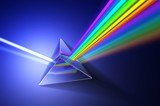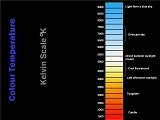Light
Brightness and Units of Light Measurement
This is a small, but by no means short, introduction to illumination and lighting as it pertains to garden lighting.
Use these ideas tips and techniques to sharpen your skills or build a better understanding and I will contue to add useful content to make the lighting experience easier.
1 footcandle is equal to 10 Lux (10.764 Lux)
Think about the lighting in the room you are sitting in right now. How would you describe the lighting level? Bright? Medium-bright? Dim?
This is exactly the language that we will use here to avoid too much reliance on terminology so that we dont have to imagine a footcandle.
Planning is key in your garden lighting success. The more complex your vision, the more you will need to do to keep the details, and budget, under control.
For example, a small garden may require simple "at a glance" planning, but a large garden or patio may require a hand-drawn plan.
Reminder
USING COLOUR.
I realized that you might be looking for information on using coloured garden light. Here is a good place to begin.
You may also use lighting calculation formulas to predict the effect of a particular lighting scheme. These formulas will not be included here but fortunately, with some basic understanding provided here and your own imagination, we can still achieve great results.
O.K. Lets get back to business
Lets apply some standards for each of these levels of brightness in approximate footcandles so that you can better decide how to illuminate each area of your garden and what types of lamps to use.
The examples in each category below will help you to recognize the different levels of illumination in your everyday environment and determine which level is appropriate for each part of your garden.
To make things easier and frankly, more human, lets define Dim light as .4 footcandles or less. Examples of dim light are full Moonlight (about .1 footcandles), and the light on a sidewalk under a street light (about .3 ).
Medium-bright light has a brightness or .5 to 8 footcandles this level o brightness is higher than moonlight or street lights, but lower than household lighting.
Low-voltage garden light fixtures can be expected to produce illumination at the lower end of this range while standard voltage will produce 4 to 5 footcandles.
Bright illumination will be 8 footcandles or higher; similar to many indoor environments. A Small reading lamp produces about 30 footcandles while most offices are illuminated to between 70 and 150 footcandles.
Consider limiting your level of outdoor illumination to a maximum of 20 footcandles! In fact 5 footcandles is a good maximum in most outdoor scenarios.
Pssst, the excessive light levels may cause glare and may annoy your neighbours. If you use bright light fixtures, consider some sort of shielding.
IES Illuminance Values for Indoor Activities
ACTIVITY CATEGORY LUX FOOTCANDLES ---------------------------------------------------------------------- Public spaces with dark A 20-30-50 2-3-5 surroundings ---------------------------------------------------------------------- Simple orientation for short B 50-75-100 5-7.5-10 temporary visits ---------------------------------------------------------------------- Working spaces where visual C 100-150-200 10-15-20 tasks are only occasionally performed ---------------------------------------------------------------------- Performance of visual tasks of D 200-300-500 20-30-50 high contrast or large size ---------------------------------------------------------------------- Performance of visual tasks of E 500-750-1000 50-75-100 medium contrast or small size ---------------------------------------------------------------------- Performance of visual tasks of F 1000-1500-2000 100-150-200 low contrast or very sm size ---------------------------------------------------------------------- Performance of visual tasks of G 2000-3000-5000 200-300-500 low contrast or very sm size over a prolonged period ---------------------------------------------------------------------- Performance of very prolonged H 5000-7500-10000 500-750-1000 and exacting visual tasks ---------------------------------------------------------------------- Performance of very special I 10000-15000-20000 1000-1500-2000 visual tasks of extremely low contrast ---------------------------------------------------------------------- A-C for illuminances over a large area (ie lobby space) D-F for localized tasks G-I for extremely difficult visual tasks
Tools and Techniques
To succeed, we need to create three types of lighting effects
. Focal glow, ambient luminescence, and sparkle or "play of brilliants".
A good way to think about your garden
and you may already be thinking this
is as a series of stages or scenes. Create points of interest along an organized path.
Unlike the daytime, night time offers us a unique opportunity to design with light by highlighting selected points of interest along the path. We dont have to illuminate an entire outdoor area with one light source or et the same level of illumination. We may choose several points of interest in the garden and illuminate them separately.
Ambient luminescence: this general lighting catches our attention , provides a basic lighting level for "seeing". It creates a area of interest for the viewer. Think of this as lighting a corner of your stage.
Ambient luminescence ensures that the surrounding space, its objects and the people there are visible
Focal glow: Directs our attention to details we wish to emphasize. Think of this as spotlighting an actor or special object on your stage.
natural special effects
Play of Brilliants: These are the natural special effects of light when light interacts with its environment. Play of light and shadows. The sparkle of dancing flame. Light filtered through branches and light twinkling in moving water.
 A Prism
A Prism
ABOVE and TOP,
We have come to use the terms warm-white and cool-white to describe the amount of red or blue present in artificial light.
White light is actually composed of an entire spectrum of both visible and invisible light called... guess what? ...The Spectrum.
You may demonstarate this phenomenon for yourself if you have a prism on hand to break a beam of white light into its basic components.
The amount of red or blue present in white light is refered to as its Colour Temperature and though it might be a little counter-intuitive, red is at the bottom of the scale and cooler while blue is at the top of the scale and hotter. Colour Temperature is measured in degrees Kelvin.


New! Comments
Have your say about what you just read! Leave me a comment in the box below.